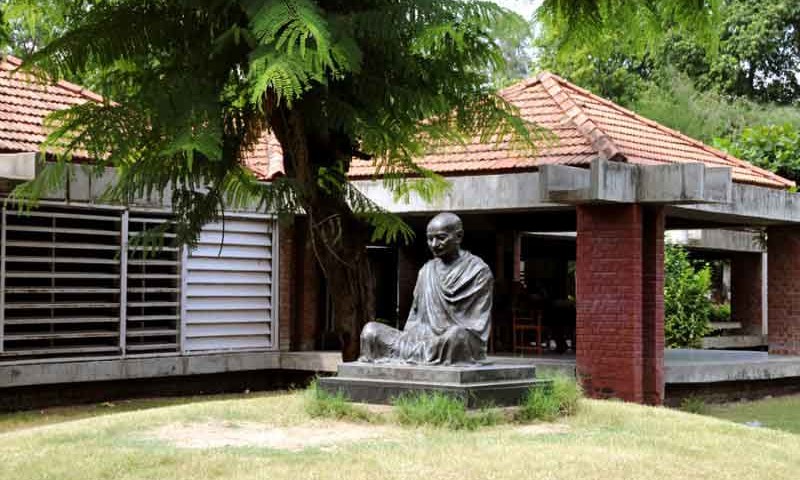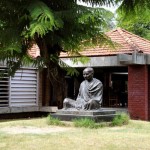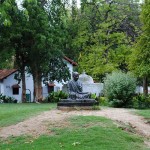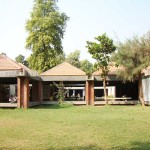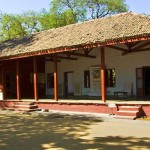Sabarmati ( Gandhi ) Asharm
Photo Gallery of Sabarmati ( Gandhi ) Ashram
Sabarmati Ashram (also known as Gandhi Ashram, Harijan Ashram, or Satyagraha Ashram) is located in the Sabarmati suburb of Ahmedabad, Gujarat, adjoining the Ashram Road, on the banks of the River Sabarmati, four miles from the town hall. This was one of the residences of Mohandas Karamchand Gandhi, generally called Mahatma Gandhi, who lived there for about twelve years along with his wife, Kasturba Gandhi.
It was from his base here that Gandhi led the Dandi march also known as the Salt Satyagraha on 12 March 1930. In recognition of the significant influence that this march had on the Indian independence movement the Indian government has established the ashram as a national monument.
Gandhi's India ashram was originally established at the Kocharab Bungalow of Jivanlal Desai, a barrister and friend of Gandhi, on 25 May 1915. At that time the ashram was called the Satyagraha Ashram. But Gandhi wanted to carry out various activities such as farming and animal husbandry, in addition to other pursuits which called for the need of a much larger area of usable land. So two years later, on 17 June 1917, the ashram was relocated to an area of thirty-six acres on the banks of the river Sabarmati, and it came to be known as the Sabarmati Ashram.
It is believed that this is one of the ancient ashram sites of Dadhichi Rishi who had donated his bones for a righteous war. His main ashram lies in Naimisharanya, near Lucknow, Uttar Pradesh. The Sabarmati ashram is sited between a jail and a crematorium, and Gandhi believed that a satyagrahi has invariably to go to either place. Mohandas Gandhi said, "This is the right place for our activities to carry on the search for truth and develop fearlessness, for on one side are the iron bolts of the foreigners, and on the other the thunderbolts of Mother Nature."
While at the ashram, Gandhi formed a tertiary school that focused on manual labour, agriculture and literacy, in order to advance his efforts for the nation's self-sufficiency. It was also from here that on 12 March 1930,Gandhi marched to Dandi, 241 miles from the ashram, with 78 companions in protest at the British Salt Law, which increased the taxes on Indian salt in an effort to promote sales of British salt in India. It was this march and the subsequent illegal production of salt (Gandhi boiled up some salty mud in seawater) that spurred hundreds of thousands across India to join in, either in the illegal production, buying or selling of salt. This mass civil disobedience in turn led to the jailing of some 60,000 freedom fighters by the British Raj over the following three weeks. Subsequently the government seized the ashram. Gandhi later asked the Government to give it back but they were not willing to do this. He had by then already decided on 22 July 1933 to disband the ashram, which then became a deserted place after the detention of so many. Then local citizens decided to preserve it. On 12 March 1930 Gandhi had vowed that he would not return to the ashram until India had gained independence. Although this was won on 15 August 1947, when India was declared a free nation, Gandhi was assassinated on 30 January 1948.



